Nel mese di novembre, la città metropolitana di Busan (conosciuta anche come Pusan), principale porto e seconda città più grande della Corea del Sud, UN-Habitat (United Nations Programme for Human Settlements), il programma delle Nazioni Unite per gli insediamenti umani sostenibili da un punto di vista sociale e ambientale, e Oceanix, la blue tech company fondata da Itai Madamombe e Marc Collins Chen “per progettare e costruire città galleggianti per vivere in modo sostenibile sull’oceano”, hanno firmato uno storico accordo per la realizzazione, di fronte alle coste di Busan, nell’Oceano Pacifico, del prototipo della prima città galleggiante ed ecologicamente sostenibile al mondo.

Credits: OCEANIX/BIG-Bjarke Ingels Group.
Progettata nel 2019, da Oceanix e dallo studio di architettura BIG-Bjarke Ingels Group, la Oceanix City, una grande comunità galleggiante resiliente e sostenibile, è stata pensata per poter ospitare un totale di 10.000 residenti su 75 ettari complessivi. Il nuovo insediamento dovrebbe essere pronto per il 2025 e costituisce una risposta tangibile alle previsioni secondo cui moltissime città costiere saranno colpite, entro il 2050, dalle erosioni del terreno, dalle inondazioni e saranno esposte all’innalzamento del livello dei mari.

Credits: OCEANIX/BIG-Bjarke Ingels Group.
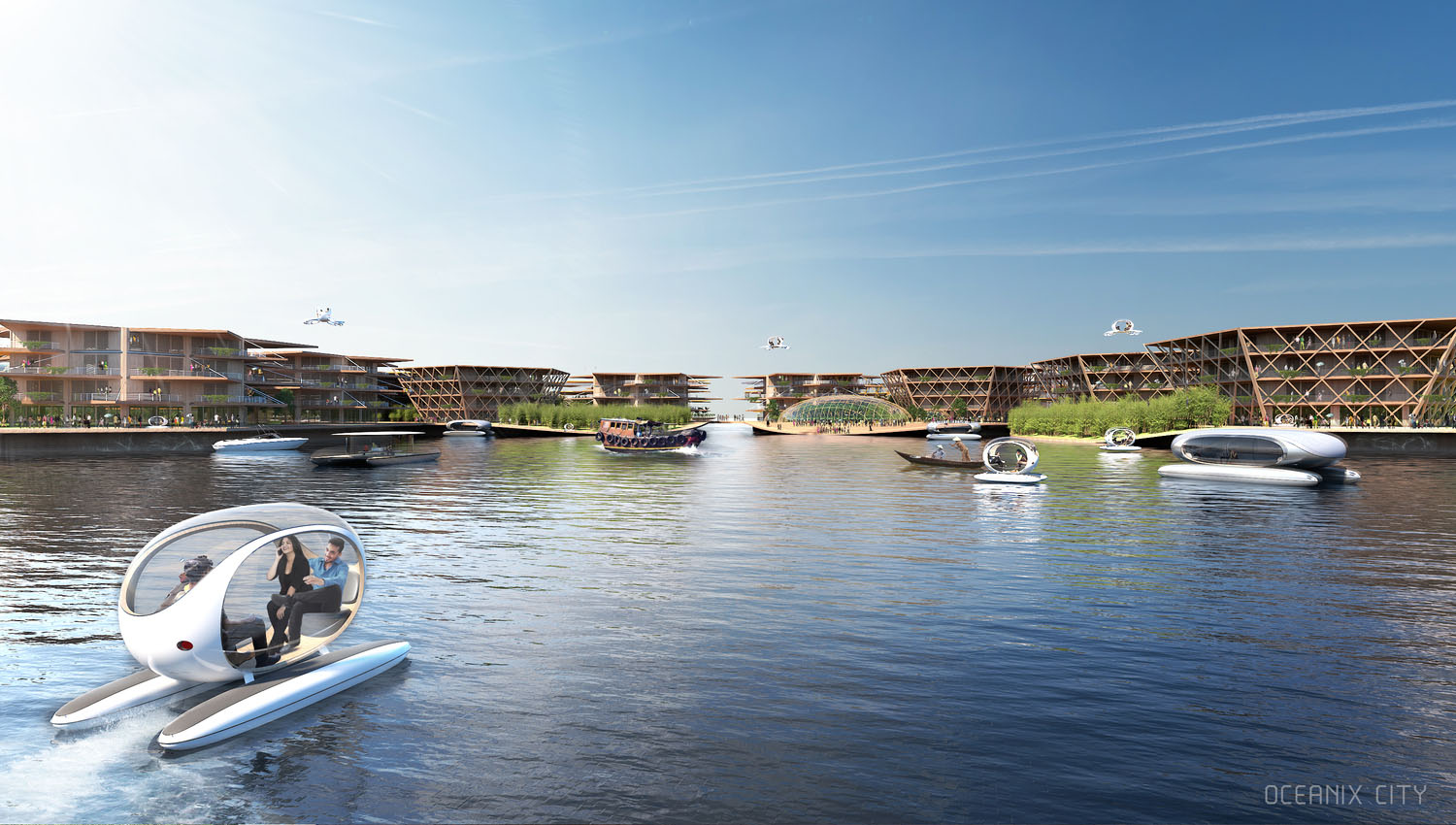
“Le città galleggianti sostenibili fanno parte della gamma di strategie di adattamento climatico che abbiamo a disposizione. Invece di combattere con l’acqua, impariamo a vivere in armonia con essa”, ha dichiarato Maimunah Mohd Sharif, direttrice esecutiva di UN-Habitat.
Qui di seguito viene presentato il progetto di Oceanix City appena approvato, corredato dalla relazione e dal comunicato stampa ufficiale.

Credits: OCEANIX/BIG-Bjarke Ingels Group.
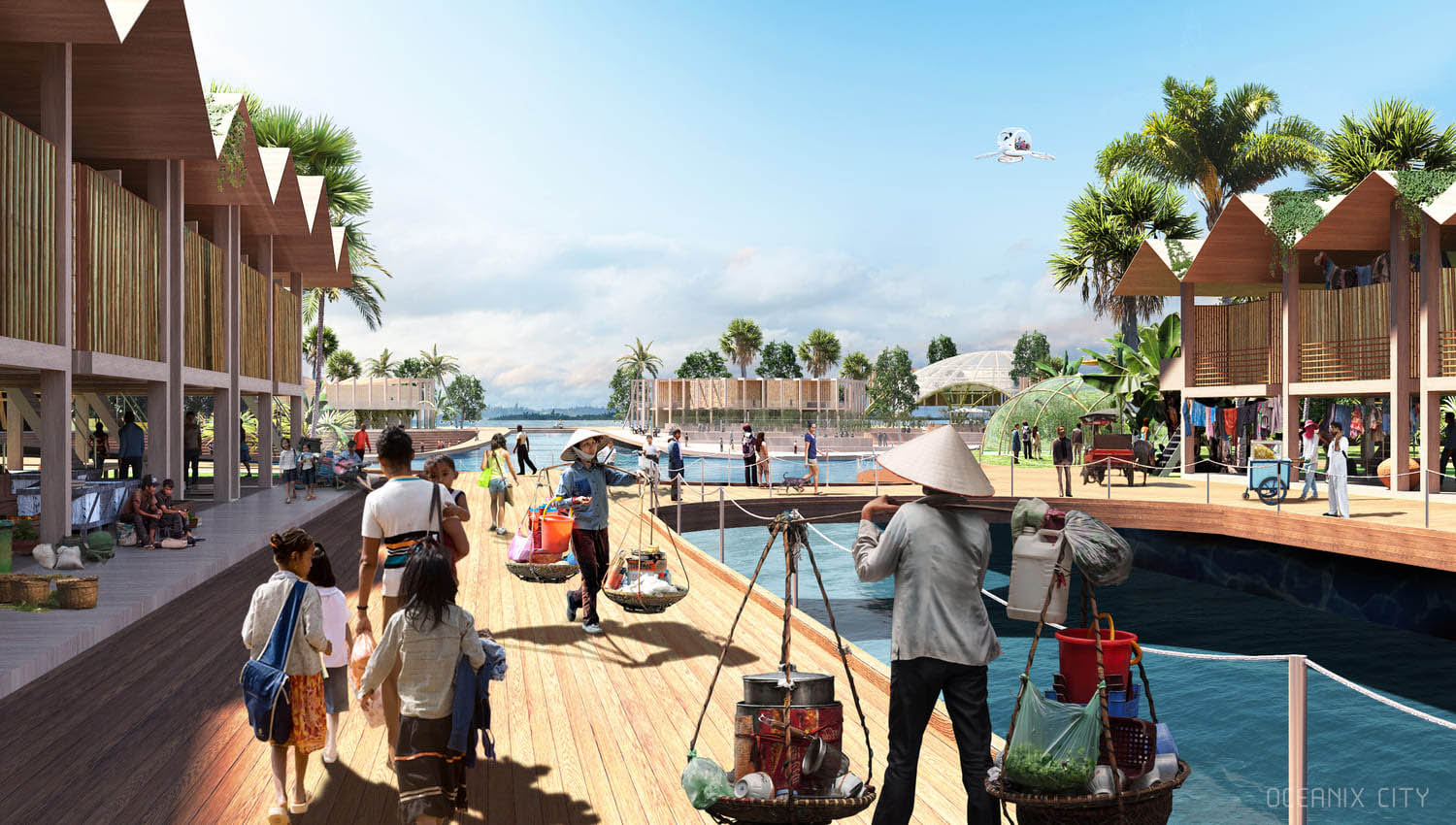
Oceanix City description
The ocean is under threat from land reclamation. As coastal cities struggle to cope with rapid population growth, many simply pour sand into the ocean to create new land. Unfettered coastal urbanization is destroying millions of hectares of the ocean and marine life; close to 50 percent of people in the world live in coastal areas. The rising sea and climate change are compounding the problem. Ninety percent of the world’s largest cities will be exposed to rising seas by 2050. The vast majority of coastal cities will be impacted by coastal erosion and flooding, displacing millions of people, while destroying homes and infrastructure.
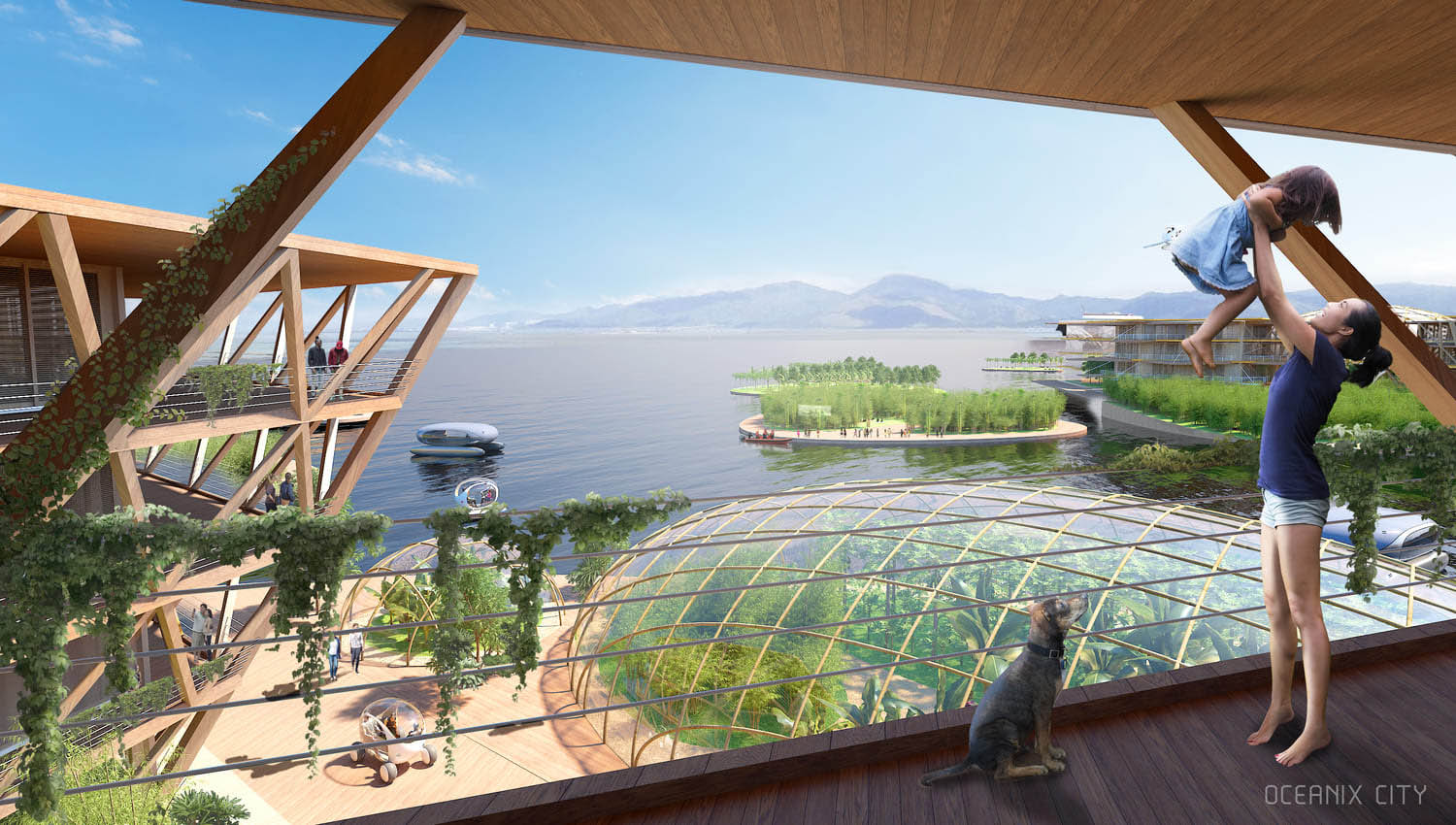
Credits: OCEANIX/BIG-Bjarke Ingels Group.

OCEANIX is taking bold steps towards a more resilient future. As part of UN-Habitat’s New Urban Agenda, OCEANIX CITY is a vision for the world’s first resilient and sustainable floating community for 10,000 residents on 75 hectares. Designed as a man-made ecosystem, it is anchored in the Sustainable Development Goals of the United Nations, channeling flows of energy, water, food and waste to create a blueprint for a modular maritime metropolis. The city is designed to grow, transform and adapt organically over time, evolving from neighborhoods to cities with the possibility of scaling indefinitely.

Credits: OCEANIX/BIG-Bjarke Ingels Group.
Modular neighborhoods of 2 hectares create thriving self-sustaining communities of up to 300 residents with mixed-use space for living, working and gathering during day and night time. All built structures in the neighborhood are kept below 7 stories to create a low center of gravity and resist wind. Every building fans out to self-shade internal spaces and public realm, providing comfort and lower cooling costs while maximizing roof area for solar capture. Communal farming is the heart of every platform, allowing residents to embrace sharing culture and zero waste systems. Below sea level, beneath the platforms, biorock floating reefs, seaweed, oysters, mussel, scallop and clam farming clean the water and accelerate ecosystem regeneration.

Credits: OCEANIX/BIG-Bjarke Ingels Group.

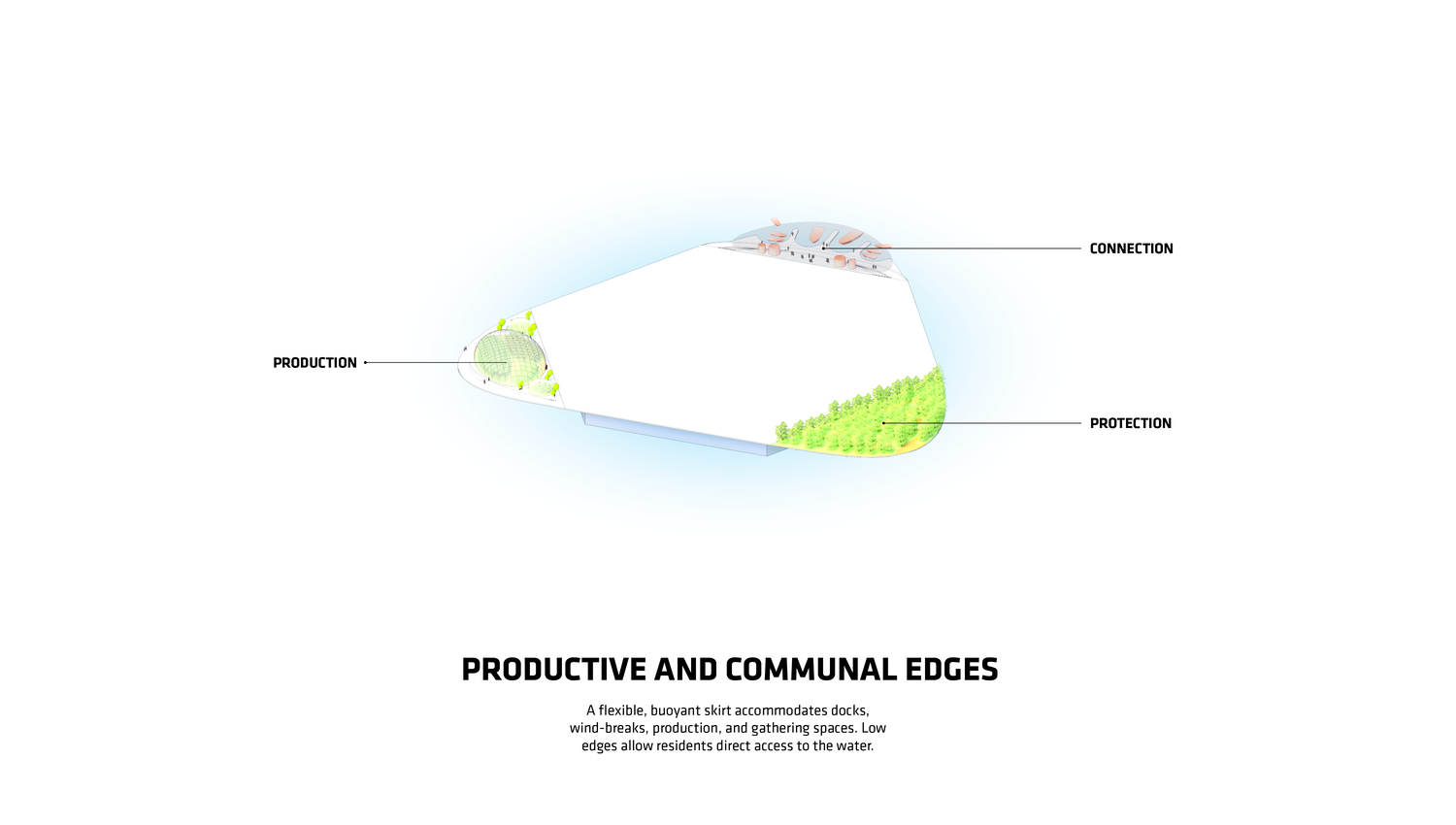
By clustering six neighborhoods around a protected central harbor, larger villages of 12 hectares can accommodate up to 1,650 residents. Social, recreational and commercial functions are placed around the sheltered inner ring to encourage citizens to gather and move around the village. Residents can easily walk or boat through the city. Aggregating to reach a critical density, six villages connect to form a city of 10,000 residents with a strong sense of community and identity. A larger protected harbor is formed in the heart of the city. Floating destinations and art, including six specialized landmark neighborhoods with a public square, market place and centers for spirituality, learning, health, sport and culture create destinations drawing residents from across the city and anchoring each neighborhood in a unique identity.
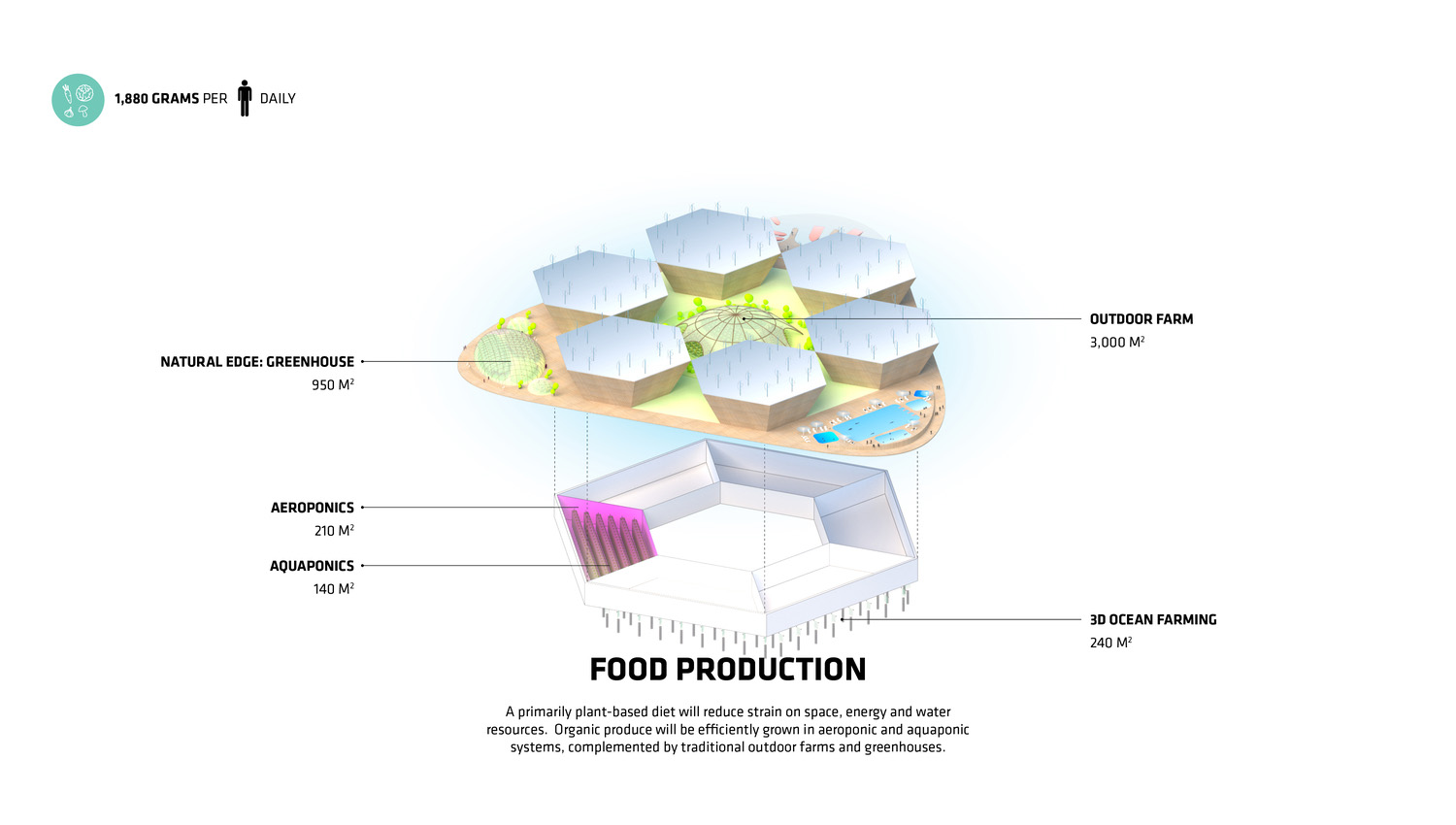
Credits: OCEANIX/BIG-Bjarke Ingels Group.


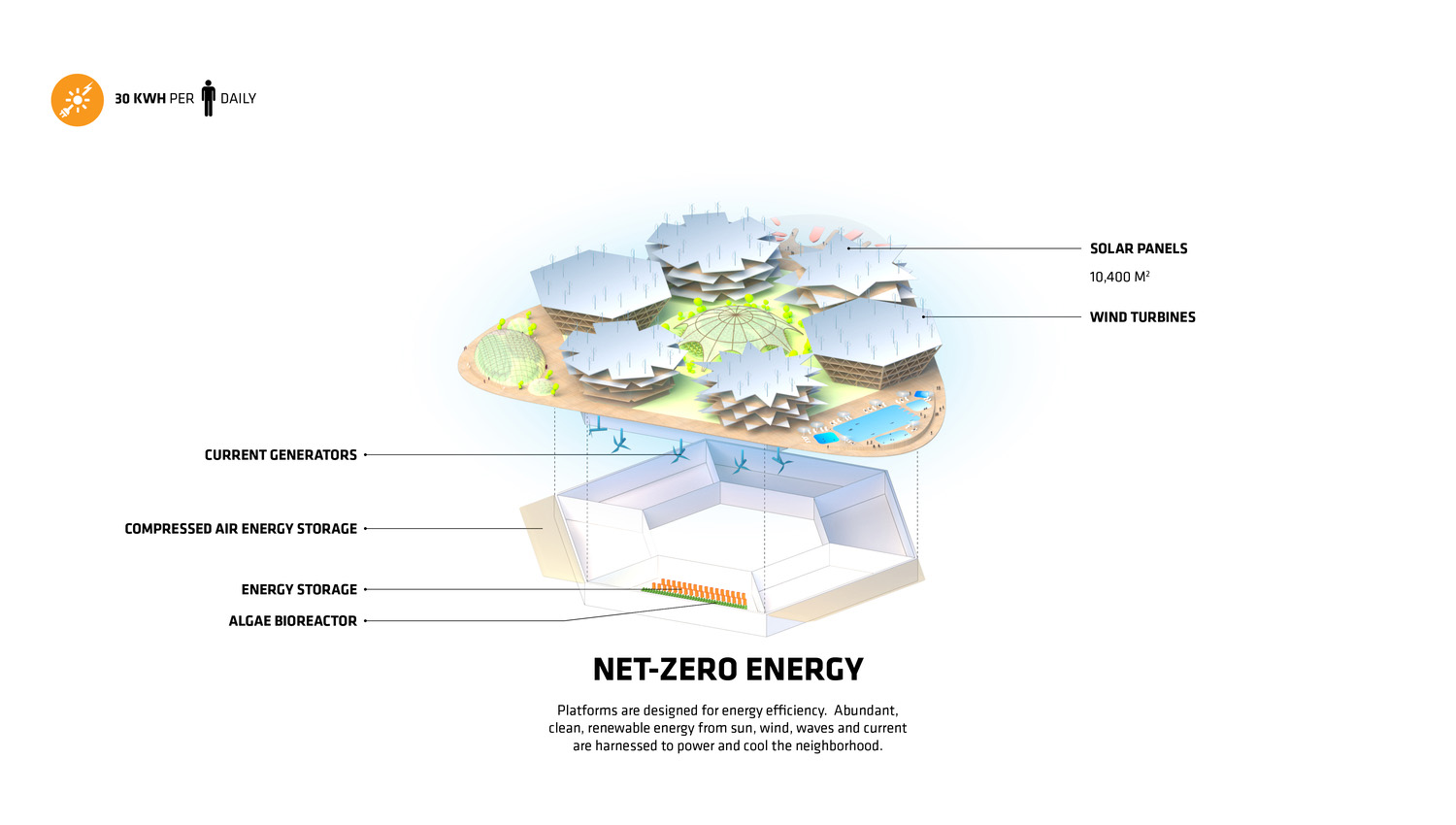
All communities regardless of size will prioritize locally sourced materials for building construction, including fast-growing bamboo that has six times the tensile strength of steel, a negative carbon footprint, and can be grown on the neighborhoods themselves. Floating Cities can be prefabricated on shore and towed to their final site, reducing construction costs. This paired with the low cost of leasing space on the ocean creates an affordable model of living. These factors mean that affordable housing can be rapidly deployed to coastal megacities in dire need. The first OCEANIX Cities are calibrated for the most vulnerable tropical and sub-tropical regions around the globe.

Credits: OCEANIX/BIG-Bjarke Ingels Group.

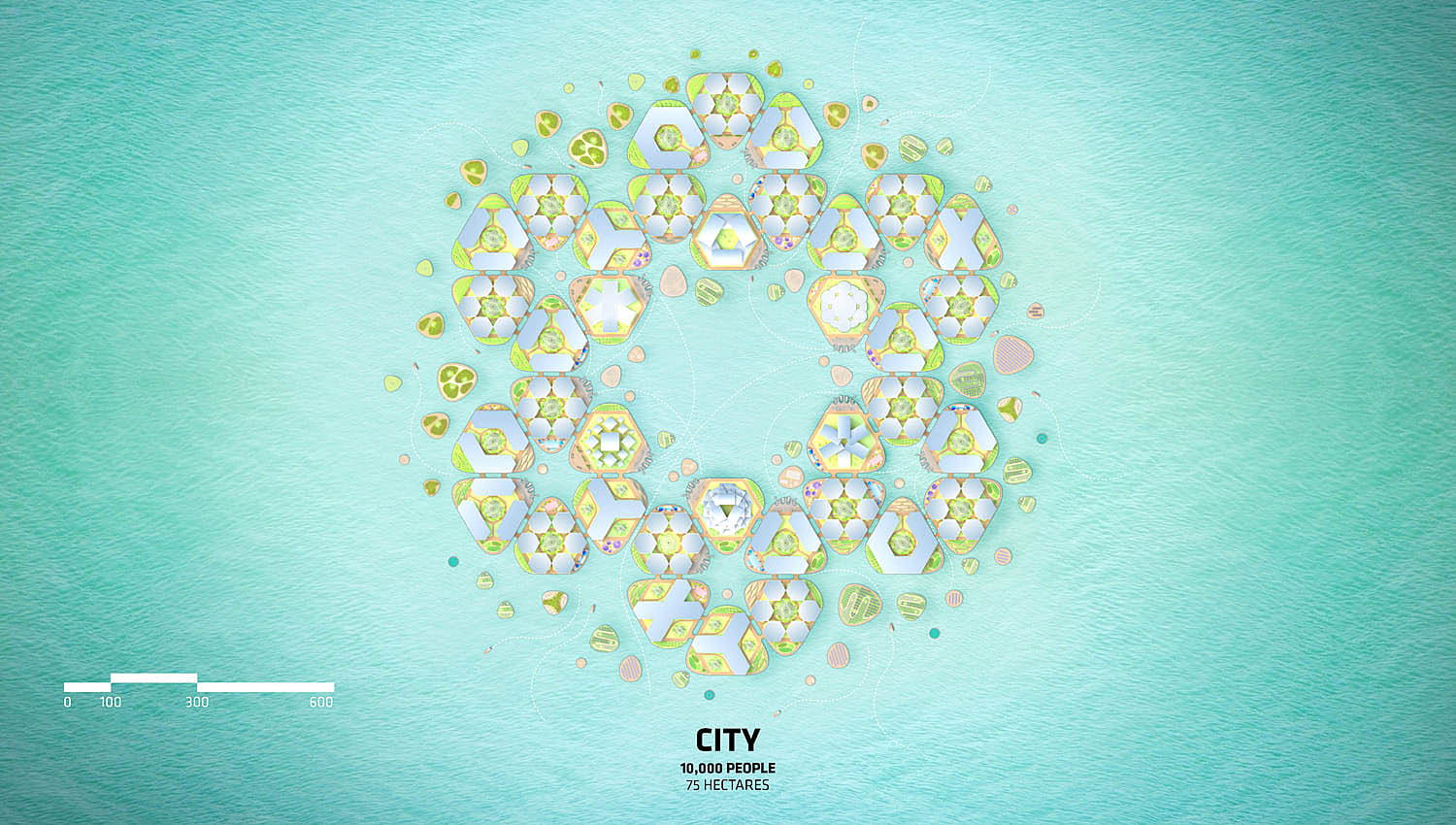
We build for people who want to live sustainably across the nexus of energy, water, food, and waste. We build smart, but most importantly, we build a thriving community of people who care about the planet and every life form on it. Humanity can live in harmony with life below water. It is not a question of one versus the other.
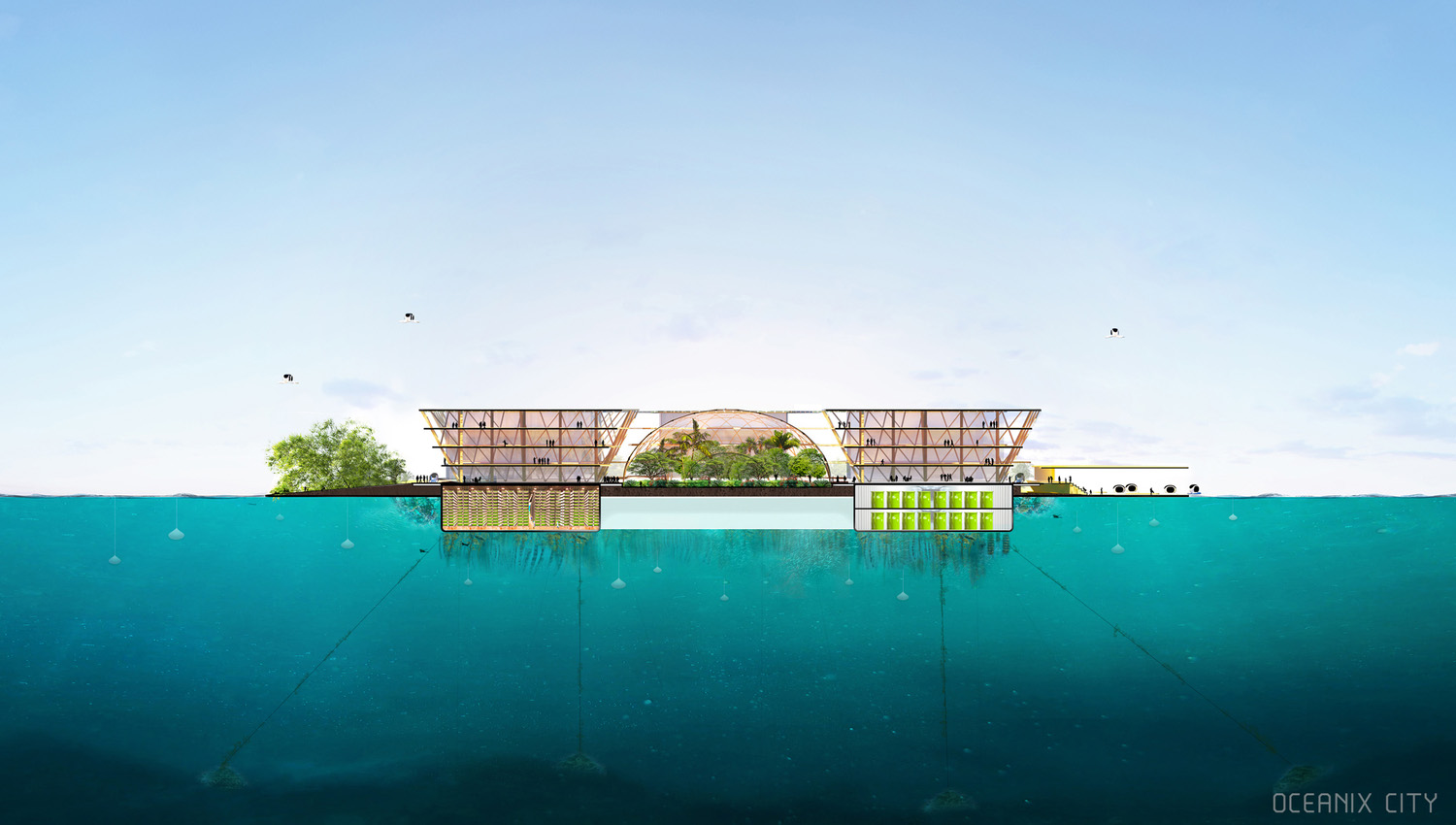
Credits: OCEANIX/BIG-Bjarke Ingels Group.







